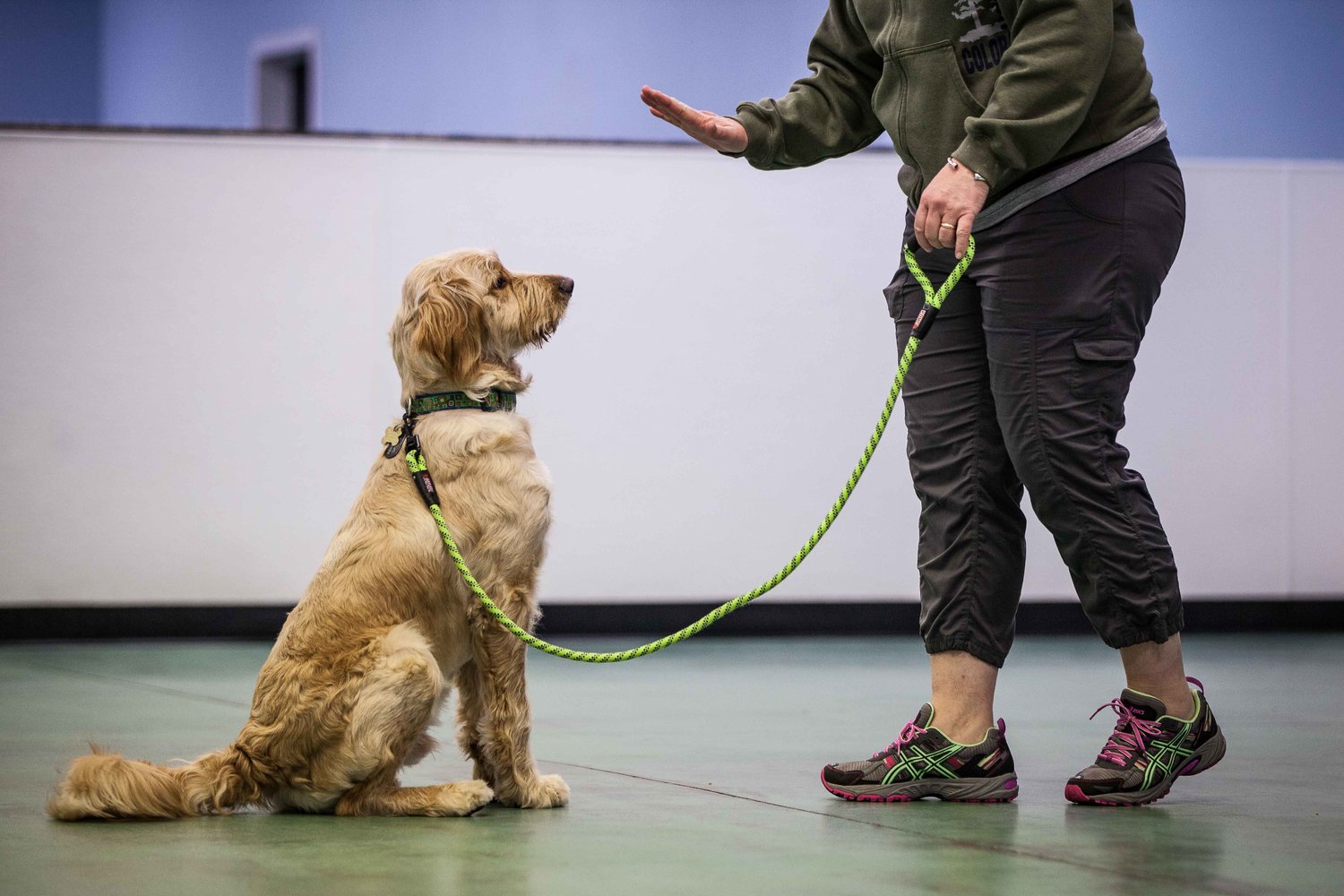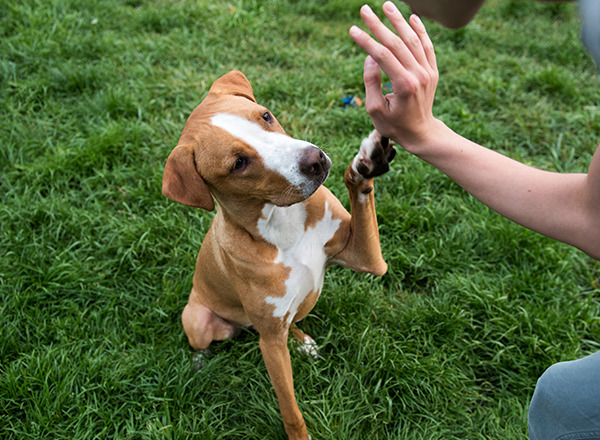The Importance of Patience and Understanding in Dog Training Practices
The Importance of Patience and Understanding in Dog Training Practices
Blog Article
Leading Dog Training Methods Every Owner Must Know

Favorable Reinforcement Strategies
Making use of favorable support methods is crucial for reliable pet training, as it fosters a relying on bond in between the fitness instructor and the dog. This technique focuses on fulfilling desirable behaviors instead of penalizing unfavorable ones, creating a setting favorable to learning. Rewards can include treats, appreciation, or playtime, which encourage dogs to duplicate the actions that gain them these benefits.

Additionally, this approach enhances the pet dog's excitement for training sessions. They are extra engaged and responsive when pet dogs link training with favorable experiences. Dog training. Past prompt therapy, favorable support urges a joint relationship between the pet dog and instructor, reducing anxiety and fear
To make best use of effectiveness, it is important to provide benefits promptly, making sure the dog connects the actions with the reinforcement. Essentially, favorable support techniques not only produce better-trained dogs but also promote a harmonious partnership between canine and owner.
Remote Control Training Approach
The clicker training technique is an extremely efficient method that builds on the principles of favorable support by adding an unique noise to mark preferred habits. This technique uses a little handheld device that produces a clicking noise, enabling fitness instructors to interact with their canines in a clear and immediate way. When a pet executes an actions that the owner wants to motivate, the clicker is activated, followed by an incentive, usually in the type of treats or praise.
The trick to effective clicker training hinges on consistency and timing. It is crucial to click at the specific minute the desired behavior takes place, guaranteeing that the pet links the sound with the action and the subsequent reward. This method not just enhances communication however likewise fosters a more powerful bond between the dog and the proprietor, as it encourages engagement and communication during training sessions.
Remote control training can be used to a range of commands and behaviors, from fundamental obedience to much more intricate methods. Its flexibility and effectiveness make it a preferred technique amongst expert trainers and family pet owners alike, leading the way for a trained and responsive canine companion.
Chain Training Fundamentals
Effective leash training is essential for making certain a enjoyable and risk-free walking experience for both canines and their proprietors. A level collar may work for some pets, while others might benefit from a harness that minimizes pulling.
Present your pet to the chain progressively, allowing them to explore it in a comfortable setting. Method loose-leash walking once they are accustomed. This involves satisfying your pet for strolling close to you rather than pulling ahead. Use deals with and praise to reinforce preferred actions, and be certain to stay assertive and calm.
If your canine begins to draw, stop strolling immediately. Additionally, technique different walking environments to help your dog adjust to interruptions.
Regular technique will certainly solidify your dog's understanding of chain rules. Keep in mind that chain training is a continuous process; perseverance and consistency will certainly produce the most effective outcomes, promoting a positive experience for both you and your canine friend.
Socializing Techniques
Socializing is a crucial facet of canine training that should preferably begin throughout puppyhood however can be advantageous at any kind of age. Efficient socializing assists pets create confidence and lowers the possibility of behavior issues. To carry out successful socializing strategies, subject your dog to a range of environments, individuals, and other animals.
Beginning with controlled setups, such as pup classes or arranged playgroups, where young dogs can engage securely. Gradually present your canine to brand-new experiences, consisting of different noises, surface areas, and activities. Make certain these encounters are positive and rewarding to establish a complacency.
For adult canines or those lacking exposure, begin with low-stress scenarios. Short, positive interactions with calm pet dogs and friendly people can develop favorable organizations. Make use of deals with and appreciation to reinforce desirable habits throughout these experiences.

Uniformity and Persistence
Recognizing the importance of uniformity and persistence in canine training is necessary for accomplishing long lasting outcomes. Educating a canine is a gradual procedure that needs a structured approach and unwavering dedication from the owner. Each command or behavior must be enhanced constantly to help the pet recognize what is expected of them. Irregular training can cause confusion, making it difficult for the pet to comprehend commands or behaviors, ultimately hindering progress.
In addition, persistence is an important component of efficient training. Pets, like humans, discover at their own speed. Some might grasp concepts swiftly, while others could take much longer. It is important for proprietors to stay encouraging and tranquil, strengthening favorable habits without turning to frustration or punishment. This promotes a relying on relationship between the canine and owner, motivating a much more enthusiastic and willing learner.
To cultivate see page consistency and patience, establish a normal training regular, make use of the very same commands, and ensure that all relative apply the exact same training principles - Dog training. By doing so, you produce a secure setting for learning, enabling your canine to prosper and develop right into a mannerly companion
Conclusion
To conclude, reliable canine training techniques, such as favorable support, clicker training, and correct chain training, are essential for cultivating a healthy owner-dog partnership. Furthermore, executing socialization approaches and keeping uniformity and perseverance throughout the training procedure contributes considerably to a pet's overall wellness. By incorporating these approaches, pet owners can facilitate the advancement of well-adjusted, loyal pet dogs, eventually improving the lifestyle for both the canine and the owner.
Among the most popular approaches are positive support, remote control training, and chain training, each offering distinct benefits that add to a well-behaved pet dog. As we explore these essential strategies, it comes to be evident that understanding description their nuances can dramatically impact the training experience and the pet dog's overall habits.Utilizing favorable reinforcement methods is vital for effective pet training, as it promotes a relying on bond in between the pet and the fitness instructor.In verdict, effective pet dog training strategies, such as favorable reinforcement, clicker training, and correct chain training, are necessary for fostering a healthy owner-dog connection. By incorporating these methods, canine owners can facilitate the development of well-adjusted, obedient family pets, inevitably enhancing the high quality of life for both the dog and the owner.
Report this page